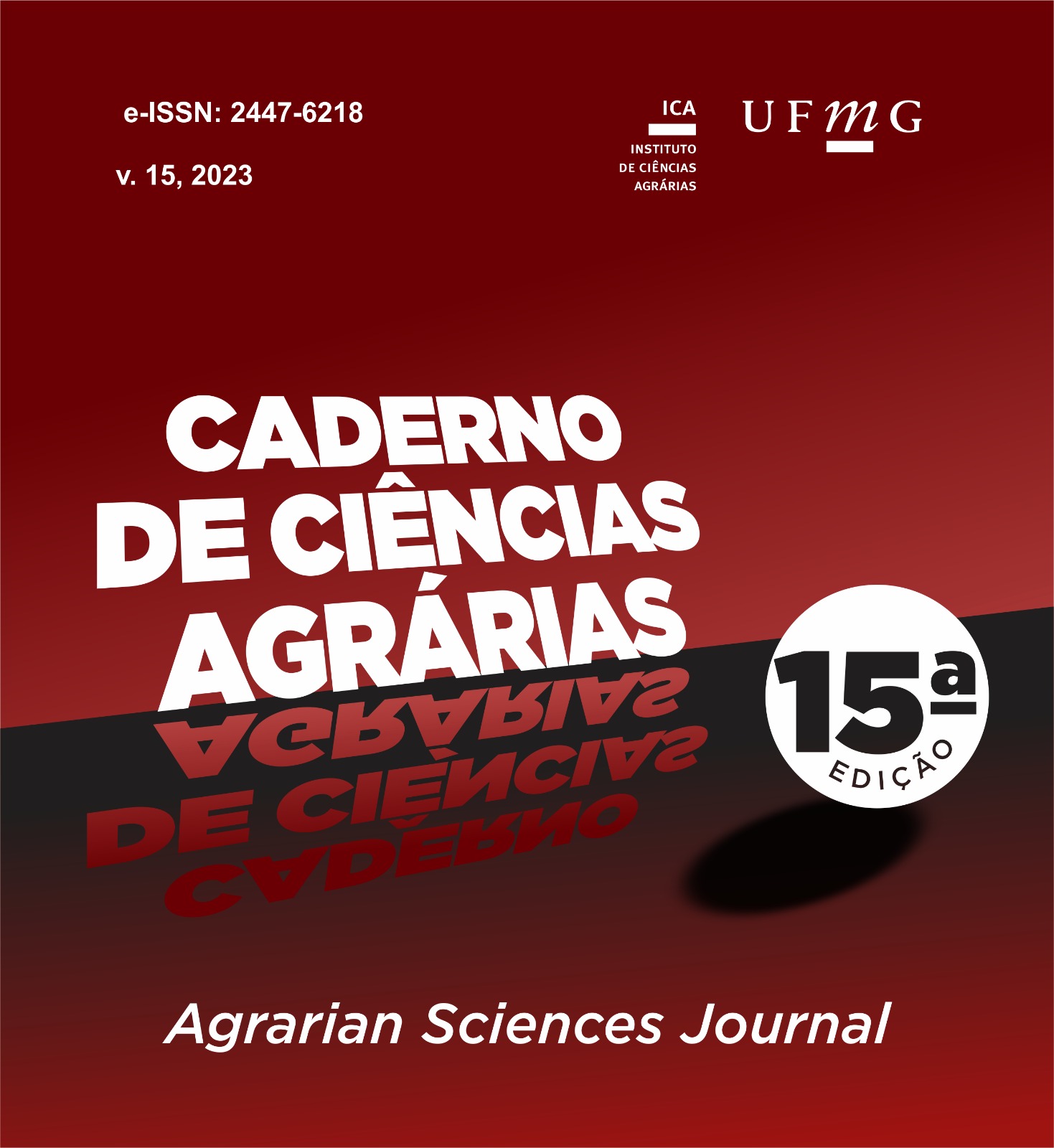Percepção das pessoas sobre o bem-estar dos equinos
DOI:
https://doi.org/10.35699/2447-6218.2023.45347Palavras-chave:
Cavalo, Comportamento, Instalações, ManejoResumo
Objetivou-se demonstrar a percepção do bem-estar de equinos por pessoas com diferentes relacionamentos com estes animais. Foi realizado a aplicação de um questionário em plataforma online com divulgação por vias eletrônicas. O questionário continha 15 questões fechadas cujo tema abordado foi bem-estar associado a dor, estereotipias, cascos, interação social, alojamento e escore de condição corporal de equinos. Foram obtidas 319 respostas. A análise estatística foi realizada através do teste qui-quadrado de Pearson considerando 5% de significância. Os fatores significativos foram o nível de sensibilidade à dor dos cavalos (P=0,0047), dor causada por equipamentos (P=0,0045), estereotipias (P=0,0231), percepção de casco com crescimento excessivo (P=0,0001), percepção de casco com crescimento normal (P=0,0416), fatores influenciados pelo crescimento excessivo dos cascos (P=0,0673), interação social (P=0,0001), qualidade do alojamento (P=0,0001), dimensionamento de baia (P=0,0002) e aspectos que influenciam o escore de condição corporal (P=0,0529). Já as questões relacionadas à capacidade dos cavalos de sentir dor (P=0,8346), importância da interação social (P=0,4507), opção ideal de interação social (P=0,1320) e escore de condição corporal (P=0,2750), não foram significativos. O tipo de relacionamento das pessoas com os cavalos interfere na percepção sobre o bem-estar animal. As pessoas que possuem algum tipo de relação direta com cavalos são mais conscientes dos aspectos básicos de bem-estar em relação àquelas que não tem relação direta com cavalos.
Referências
AWIN. 2015. Welfare assessment protocol for horses. 1:205. Doi: http://dx.doi.org/10.13130/AWIN_horses_2015
Ministério da Agricultura, Pecuária e Abastecimento - MAPA. 2016. Revisão do Estudo do Complexo do Agronegócio do Cavalo. Brasília: MAPA/ACS, 56p.
Broom, D. M.; Kennedy, M. J. 1993. Stereotypies in Horses: their relevance to welfare and causation. Equine Veterinary Education, 5(3):151–154. Doi: https://doi.org/10.1111/j.2042-3292.1993.tb01026.x
Carroll, C. L.; Huntington P. J. 1988. Body condition scoring and weight estimation of horses. Equine veterinary journal, 20(1):41-45. Doi: https://doi.org/10.1111/j.2042-3306.1988.tb01451.x
Luna, D.; Vásquez J. M. Y. 2018. The relationship between working horse welfare state and their owners’ empathy level and perception of equine pain. Animal Welfare, 27(2):115-123. Doi: https://doi.org/10.7120/09627286.27.2.115
Luna, D.; Tadich, T. A. 2019. Why should human-animal interactions be included in research of working equids’ welfare?. Animals, 9(2):42. Doi: https://doi.org/10.3390/ani9020042
Melo, U. P.; Ferreira, C.; Santiago, R. M. F. W.; Palhares, M. S.; Maranhão, R. P. A. 2006. Equilíbrio do casco equino. Ciência Animal Brasileira, 7(4):389-398. Doi: https://doi.org/10.5216/cab.v7i4.868
Mellor, D. J.; Beausoleil, N. J. 2017. Equine welfare during exercise: An evaluation of breathing, breathlessness and bridles. Animals, 7(6):41.
SAS INSTITUTE Inc. SAS/STAT. 2005. User’s guide, version 9.1. Cary: SAS Institute.
Sommerville, R.; Ashleigh, F. B.; Melissa, U. 2018. A standardised equine-based welfare assessment tool used for six years in low and middle income countries. PLoS One, 13(2):1-8. Doi: https://doi.org/10.1371/journal.pone.0192354
Taylor, P. M.; Pascoe, P.J.; Mama, K. R. 2002. Diagnosing and treating pain in the horse, where are we today?. Veterinary Clinics of North America: Equine Practice, 18:1–19. Doi: https://doi.org/10.1016/S0749-0739(02)00009-3
Visser, E. K.; Van Wijk-Jansen, E. E. C. 2012. Diversity in horse enthusiasts with respect to horse welfare: An explorative study. Journal of Veterinary Behavior, 7:295-304. Doi: https://doi.org/10.1016/j.jveb.2011.10.007
Yuging He, J. N.; Reed, S.; Hoagland, T.; Bushmich, S.; Aborn, S.; Jones, A.K.; Martin, D. 2019. The Effect of Season on Muscle Growth, Fat Deposition, Travel Patterns, and Hoof Growth of Domestic Young Horses. Journal of Equine Veterinary Science, 85:1-10. Doi: https://doi.org/10.1016/j.jevs.2019.102817
Publicado
Edição
Seção
Licença
Copyright (c) 2023 Caderno de Ciências Agrárias

Este trabalho está licenciado sob uma licença Creative Commons Attribution 4.0 International License.
Autores que publicam nesta revista concordam com os seguintes termos:
Os Direitos Autorais para artigos publicados nesta revista são de direito do autor. Em virtude da aparecerem nesta revista de acesso público, os artigos são de uso gratuito, com atribuições próprias, em aplicações educacionais e não-comerciais.
A revista se reserva o direito de efetuar, nos originais, alterações de ordem normativa, ortográfica e gramatical, com vistas a manter o padrão culto da língua e a credibilidade do veículo. Respeitará, no entanto, o estilo de escrever dos autores.
Alterações, correções ou sugestões de ordem conceitual serão encaminhadas aos autores, quando necessário. Nesses casos, os artigos, depois de adequados, deverão ser submetidos a nova apreciação.
As opiniões emitidas pelos autores dos artigos são de sua exclusiva responsabilidade.







